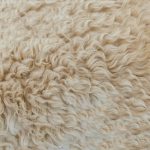Polyamide is a warm fabric that works well for cold weather because it traps your body heat while wicking moisture away to keep you dry and comfortable. It’s lightweight and breathable but still insulates thanks to tiny air pockets that hold warmth. You’ll find it great for base or mid-layers, especially if you need durable, quick-drying clothing. If you want to know how to layer or care for it properly, there’s more helpful info ahead.
Table of Contents
Key Takeaways
- Polyamide fabric is lightweight and traps body heat through low thermal conductivity, providing effective warmth in cold weather.
- It excels at moisture-wicking, keeping skin dry and preventing the clammy feeling typical in cold conditions.
- Polyamide is best used as a base or mid-layer to retain warmth while allowing breathability and moisture management.
- Compared to natural fibers like wool, polyamide dries faster but offers less insulation when damp.
- Its durability and quick-drying nature make polyamide ideal for activewear and outdoor apparel in cold environments.
Understanding Polyamide: What Is It Made Of?
Polyamide, commonly known as nylon, is a synthetic fiber made from petrochemicals through a process called polymerization.
When you wear polyamide fabric, you’re fundamentally wearing long chains of molecules linked together to create a strong, flexible material. These chains form fibers that can be woven into textiles with a smooth texture and excellent durability.
Because polyamide is man-made, manufacturers can control its properties, such as strength and elasticity, to suit different uses. You’ll find polyamide in everything from activewear to outerwear, thanks to its lightweight yet resilient nature.
Understanding what polyamide is made of helps you appreciate why it performs well in various clothing applications, especially when durability and stretch are important.
Thermal Properties of Polyamide Fabric
Although it’s lightweight and breathable, this fabric can still offer a surprising amount of warmth when worn.
Polyamide fibers have low thermal conductivity, which means they don’t easily transfer heat away from your body. This helps trap your natural warmth close to your skin, making you feel cozy in cooler conditions.
Plus, polyamide’s moisture-wicking ability guarantees sweat doesn’t stay on your skin, reducing that clammy cold feeling.
When you layer polyamide clothing, the fabric forms tiny air pockets that add insulation without bulk.
Keep in mind, though, polyamide isn’t as insulating as heavier fabrics, so it works best as a base or mid-layer in cold weather.
You’ll appreciate its quick-drying and durable nature combined with decent warmth.
Comparing Polyamide to Natural Fibers for Warmth
When you compare polyamide to wool, you’ll notice differences in warmth and insulation.
Wool naturally traps heat better, while polyamide relies on its structure to retain warmth.
Understanding these contrasts helps you choose the right fabric for cold weather.
Polyamide Vs Wool Warmth
If you’re weighing warmth options, you’ll find that wool naturally outperforms polyamide in insulating properties. Wool traps air efficiently, keeping you warmer in cold weather, while polyamide mainly offers durability and moisture resistance. However, polyamide can complement wool in blends, enhancing strength and quick-drying features. Here’s a quick comparison to help you decide:
| Feature | Wool | Polyamide |
|---|---|---|
| Warmth | Excellent insulation | Moderate insulation |
| Moisture wicking | Good, absorbs moisture | Excellent, repels water |
| Durability | Moderate | High |
| Breathability | High | Moderate |
| Care | Requires gentle washing | Easy to wash |
Choosing depends on your needs: pure warmth or a balance with durability.
Insulation Properties Comparison
Since insulation plays an essential role in keeping you warm, comparing polyamide to natural fibers like wool and cotton helps clarify their effectiveness.
Polyamide, a synthetic material, traps heat well but lacks the natural breathability and moisture-wicking properties you get from wool or cotton.
Wool excels by keeping you warm even when damp, while cotton tends to lose heat retention when wet.
Polyamide dries quickly, making it great for active wear, but it can feel less cozy than natural fibers.
- Imagine the comforting warmth of wool on a chilly day
- The quick-drying nature of polyamide for your outdoor adventures
- The soft, breathable touch of cotton against your skin
- The frustration of cotton feeling damp and cold
- The reliable insulation wool provides, rain or shine
Choose based on your warmth needs and activity level.
How Polyamide Performs in Moisture Management
You’ll want to know how polyamide handles moisture when you’re wearing it in cold or active conditions.
It wicks sweat away from your skin and dries quickly, helping you stay comfortable and warm.
Let’s look at how these moisture management properties affect your overall experience with polyamide fabric.
Moisture Wicking Ability
Although polyamide is known for its warmth and durability, it also excels at managing moisture. When you wear polyamide fabrics, they actively pull sweat away from your skin, keeping you dry and comfortable.
This moisture-wicking ability prevents that clammy feeling many experience in cold weather, helping you stay warm without overheating. You’ll appreciate how polyamide fibers effortlessly handle moisture, making your outdoor activities more enjoyable.
- Stay dry even during intense workouts
- Avoid the discomfort of damp, cold fabric
- Feel confident in your warmth throughout the day
- Experience less irritation from sweat buildup
- Enjoy fabrics that support your active lifestyle
Polyamide’s moisture-wicking power truly enhances your comfort in chilly conditions.
Drying Speed and Comfort
Beyond pulling moisture away from your skin, polyamide fabrics dry remarkably fast, which adds to your overall comfort.
When you’re active in cold weather, staying dry is essential to maintain warmth, and polyamide excels here. Its fibers don’t hold onto water like natural fabrics, so sweat evaporates quickly, preventing that damp, chilled feeling.
You won’t have to worry about your clothes feeling heavy or soggy during outdoor activities. This quick-drying property also means your layers stay breathable, helping regulate your body temperature more effectively.
Whether you’re hiking, skiing, or simply out on a chilly day, polyamide’s moisture management keeps you comfortable by reducing sweat buildup and speeding up drying time, ensuring you stay warm and dry without extra bulk.
Benefits of Polyamide in Cold Weather Clothing
When you wear polyamide in cold weather, you benefit from its excellent insulation properties that keep warmth close to your body.
This fabric’s lightweight nature doesn’t trap moisture, which helps prevent the chill that damp clothes bring.
Polyamide’s durability means your cold-weather gear stays reliable through harsh conditions, so you feel protected and confident.
It’s also flexible, allowing you freedom of movement without bulk.
Plus, polyamide dries quickly, so you stay comfortable even if you sweat or get caught in snow.
- Stay cozy without feeling weighed down
- Enjoy lasting warmth on frosty days
- Move freely during outdoor adventures
- Feel confident in weather-resistant gear
- Experience quick drying for all-day comfort
Common Polyamide Blends and Their Warmth Levels
Many polyamide blends combine this fabric with materials like wool, polyester, or elastane to balance warmth, durability, and comfort.
When polyamide is mixed with wool, you get excellent insulation and moisture-wicking properties, making it a great choice for colder days.
Blends with polyester often enhance durability and quick-drying features, but warmth depends on the fabric weight and weave.
Polyamide-polyester blends boost durability and drying speed, with warmth varying by fabric weight and weave.
Adding elastane provides stretch, improving fit without sacrificing heat retention.
You’ll find that polyamide-wool blends generally offer the best warmth, while polyamide-polyester mixes suit milder cold conditions.
Understanding these blends helps you pick the right garment for your needs, ensuring you stay warm without overheating or feeling restricted during cold weather activities.
Polyamide in Outdoor and Athletic Apparel
When you’re choosing gear for outdoor or athletic activities, polyamide stands out for its moisture-wicking ability that keeps you dry.
You’ll also appreciate its durability in tough conditions, ensuring your clothes last through wear and tear.
Plus, polyamide offers lightweight insulation, so you stay warm without feeling weighed down.
Moisture Wicking Properties
Polyamide stands out for its exceptional moisture-wicking properties, making it a top choice in outdoor and athletic apparel.
When you wear polyamide, it pulls sweat away from your skin, keeping you dry and comfortable during intense activities or chilly weather. This means you won’t feel clammy or weighed down, even when you’re pushing your limits.
Plus, its quick-drying nature lets you stay warm without the discomfort of lingering moisture. You’ll appreciate how polyamide helps regulate your body temperature, so you stay cozy and focused.
- Feel fresh and dry, no matter the activity
- Stay comfortable without sticky sweat buildup
- Enjoy faster drying times after workouts
- Avoid chills from damp clothing in cold weather
- Maintain confidence with gear that keeps up with you
Durability in Harsh Conditions
Beyond keeping you dry and comfortable, polyamide is built to withstand the toughest conditions you’ll face outdoors.
When you’re hiking, skiing, or running in rough terrain, this fabric resists abrasions, tears, and stretching far better than many natural fibers. You can rely on polyamide gear to hold up against branches, rocks, and constant movement without losing shape or performance.
Its strong fiber structure also means it dries quickly after exposure to rain or snow, preventing damage from prolonged moisture.
Whether you’re scaling mountains or hitting the trail, polyamide’s durability guarantees your clothing and gear stay intact, so you’re not slowed down by wear and tear. This makes it a smart choice for athletes and outdoor enthusiasts who demand reliable, long-lasting apparel.
Lightweight Insulation Benefits
Although you mightn’t immediately think of it as an insulating material, polyamide offers exceptional lightweight warmth that’s perfect for outdoor and athletic apparel.
When you wear polyamide-based gear, you get insulation without the bulk, letting you move freely and stay comfortable in chilly conditions. This fabric traps heat efficiently, keeping you cozy during early morning runs or brisk hikes.
Plus, it dries quickly, so you won’t be weighed down by moisture. Whether you’re layering up or relying on a single piece, polyamide’s lightweight insulation lets you perform at your best without overheating.
- Feel the freedom of movement without heavy layers
- Stay warm without sacrificing breathability
- Enjoy moisture-wicking comfort during intense activity
- Experience quick-drying fabric that keeps you light
- Trust durable warmth that adapts to changing weather
Layering Tips Using Polyamide Fabrics
When layering clothes for warmth, you’ll find that polyamide fabrics offer excellent versatility due to their lightweight and moisture-wicking properties. Start with a polyamide base layer to keep sweat away from your skin, then add insulating layers on top for trapped warmth. Polyamide works well under bulkier jackets since it won’t add unnecessary weight or bulk.
| Layer Type | Polyamide Tip |
|---|---|
| Base Layer | Choose thin, snug polyamide tops |
| Mid Layer | Use polyamide blends for warmth |
| Outer Layer | Add windproof polyamide shells |
This approach keeps you dry and comfortable, maximizing warmth without overheating. You’ll appreciate how polyamide supports efficient layering for chilly conditions.
Care and Maintenance for Polyamide Garments in Winter
Since polyamide fabrics are designed to handle moisture and temperature changes, you’ll want to follow specific care steps to keep your garments performing well throughout winter.
Treating your polyamide clothing with care guarantees they stay warm and comfortable, helping you brave the cold without hassle.
Remember to:
- Wash in cold water to preserve fabric integrity
- Use gentle detergents to avoid damage
- Avoid fabric softeners that reduce moisture-wicking
- Air dry flat to maintain shape and avoid shrinking
- Store in a cool, dry place to prevent mildew
Alternatives to Polyamide for Enhanced Warmth
If you’re looking for fabrics that offer more warmth than polyamide, you’ll find several excellent alternatives that can better insulate against cold weather. Wool, fleece, and down are popular choices known for their superior heat retention and comfort. Wool naturally traps heat and wicks moisture, fleece provides lightweight insulation, and down offers exceptional warmth with minimal weight.
| Fabric | Warmth Level | Key Benefit |
|---|---|---|
| Wool | High | Moisture-wicking |
| Fleece | Moderate-High | Lightweight |
| Down | Very High | Excellent insulation |
Choosing one of these fabrics can keep you warmer during chilly days compared to polyamide, especially if you layer appropriately.
Frequently Asked Questions
Is Polyamide Fabric Environmentally Friendly?
You shouldn’t expect polyamide to be very eco-friendly since it’s a synthetic fabric made from fossil fuels. However, some brands use recycled polyamide, which helps reduce environmental impact and makes it a greener choice for you.
Can Polyamide Cause Skin Allergies or Irritation?
Think of polyamide as a cloak—usually smooth but sometimes prickly. You might find it irritates sensitive skin or triggers allergies, so always test a small patch before embracing it fully in your wardrobe.
How Does Polyamide Fabric Hold up After Repeated Washing?
Polyamide fabric holds up well after repeated washing if you follow care instructions. You’ll notice it retains strength, shape, and color, but avoid high heat to prevent damage and maintain its durability over time.
Does Polyamide Fabric Retain Odors in Cold Weather Use?
You’ll find polyamide tends to retain odors more than natural fibers, especially during cold weather when sweat evaporates slower. Regular washing and airing out your gear will help keep it fresh and odor-free.
Is Polyamide Suitable for Formal Winter Clothing?
You might think polyamide feels too synthetic for formal winter wear, but it actually offers durability and moisture resistance. Pair it with wool or silk to keep warm and stylish at any formal event this winter.
- How to Tie-Dye a Striped Shirt Perfectly - July 13, 2025
- What Is the Hardest Tie-Dye Pattern to Create? - July 13, 2025
- The History of Tie-Dye: From Ancient Art to 60s Counter-Culture - July 13, 2025







